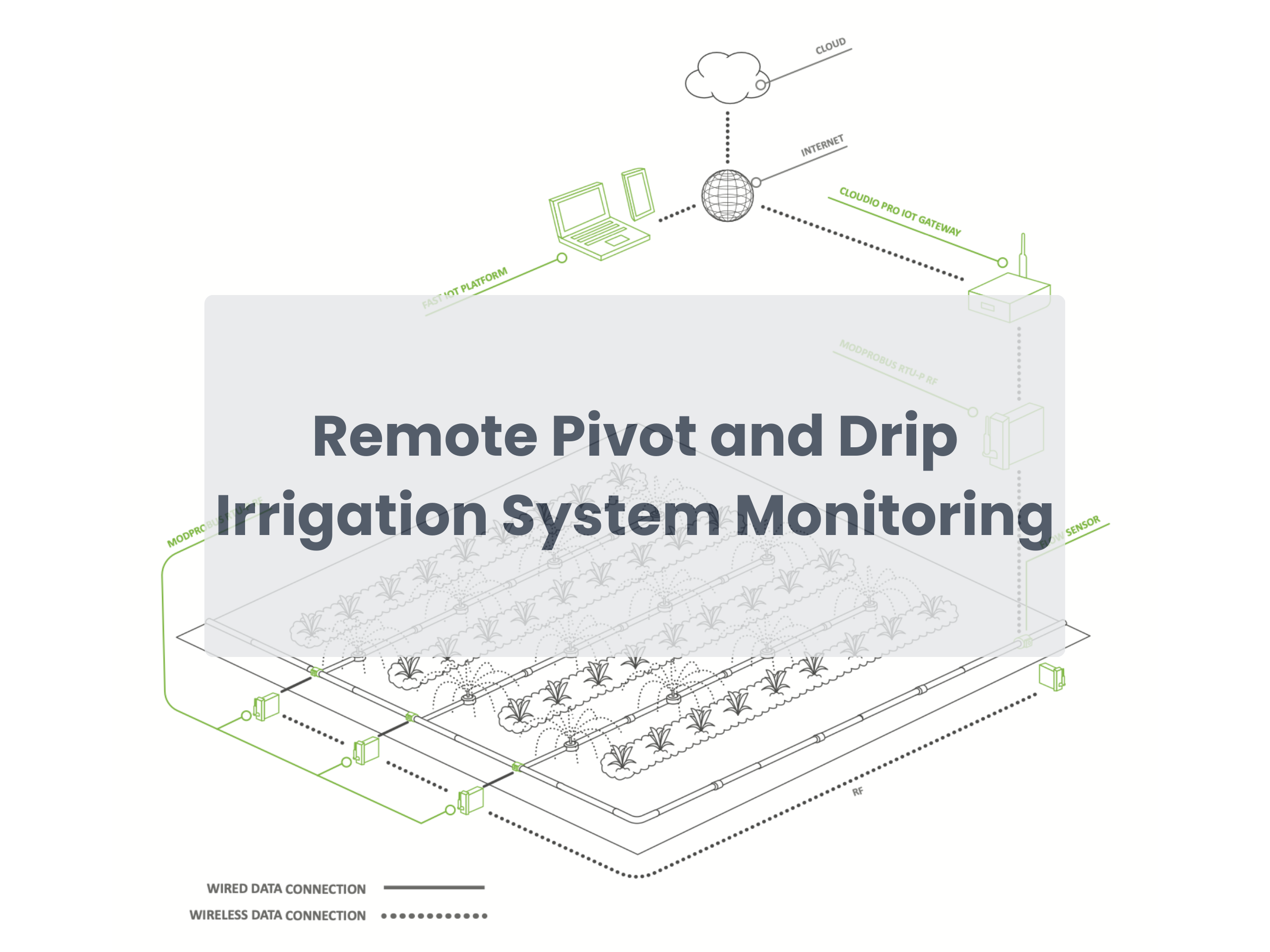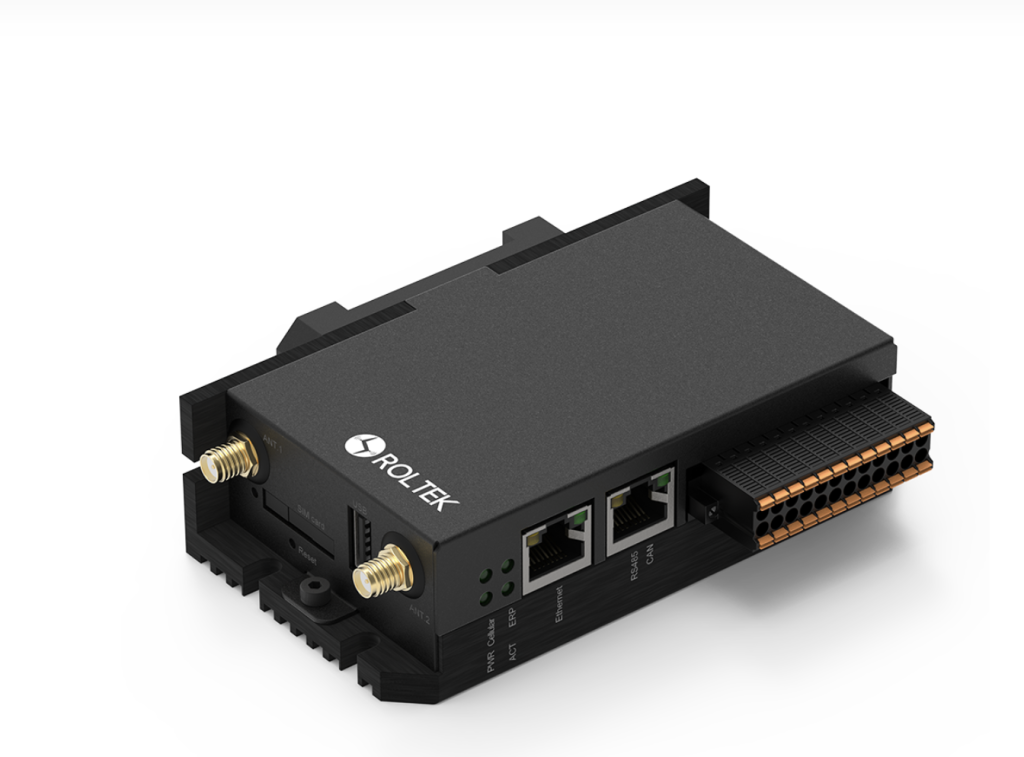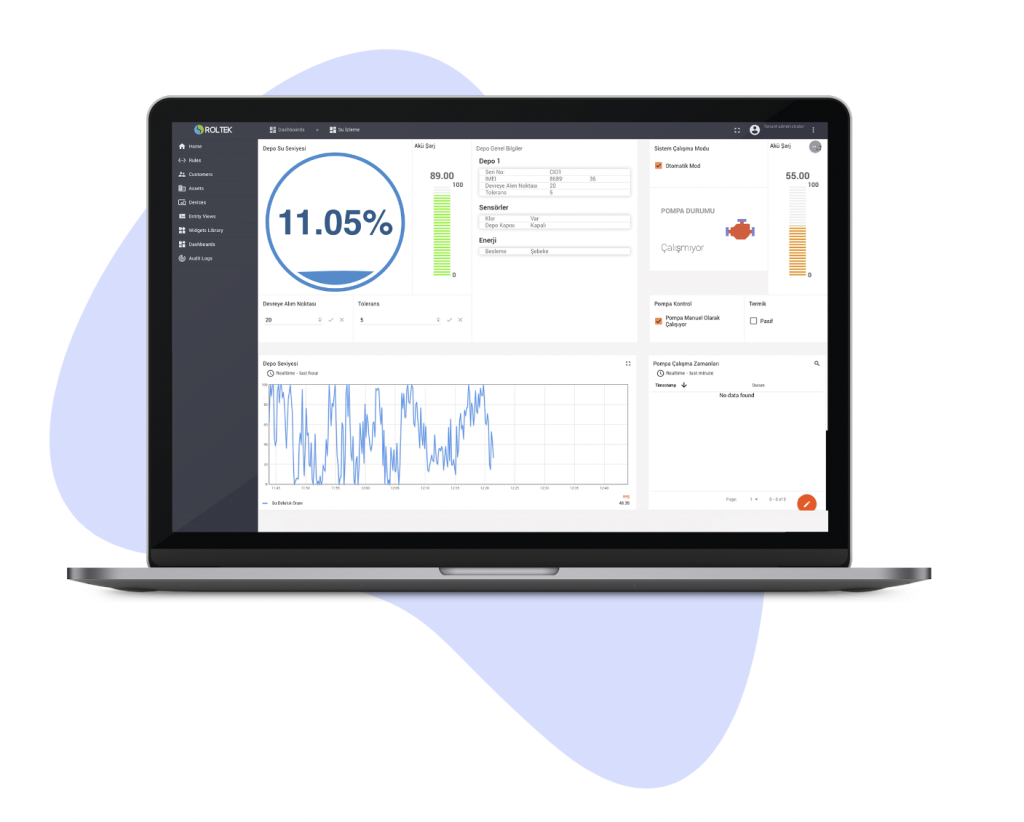Problems in the Agriculture Sector and the Importance of Wireless Automation
Traditionally, they are equipment such as solenoid valves used for irrigation of agricultural lands. It’s controlled and managed manually. However, these methods aren’t effective on large lands and reduce productivity. Activating valves in the field during peak irrigation times is a time-consuming and costly process. Additionally, unnecessary irrigation during this process causes both water loss and reduced productivity. This is exactly where wireless automation systems come into play. Wireless automation and remote control of solenoid valves in agricultural fields. It allows for collecting data at a central point. This offers agricultural operators and experts the opportunity to manage and control the irrigation process more effectively. These systems offer a powerful tool to increase productivity, regardless of the extent or geographical location of farmland. It includes advantages such as more accurate irrigation, water savings, increasing labor efficiency, and reducing production costs.

Wireless Irrigation Automation and Its Advantage
Wireless irrigation automation is a cutting-edge technology that streamlines and manages agricultural irrigation processes. This system provides the opportunity to wirelessly control and monitor irrigation equipment on agricultural lands. Its aim is to make the irrigation process more effective, efficient, and environmentally friendly.
Wireless irrigation automation is typically managed from a central control point. It works through modems or devices that wirelessly send commands to solenoid valves on farmland. These modems are connected to the Internet or remote communication networks and offer remote access. In this way, agricultural operators or experts manage and control the irrigation process on agricultural lands from any geographical location. The main purpose of wireless irrigation automation is to optimize the irrigation process on agricultural lands and increase efficiency.
Additionally, thanks to wireless irrigation automation, the irrigation process is monitored more easily and effectively. Data collected through sensors is analyzed and reported on a central software platform. Agricultural operators continuously monitor the performance of irrigation systems and can intervene as needed.
ModProBus RTU-P RF Modem; Managing Fields Wirelessly
The ModProBus RTU-P RF modem is a critical component for wireless irrigation automation in the agricultural industry. The modem is capable of wirelessly controlling solenoid valves in farmland and facilitating data communication. They are ModProBus RTU-P RF modems that generally communicate with a central control point. It makes it possible to remotely manage irrigation equipment on agricultural lands.
These modems transmit data using RF (radio frequency) technology. They generally have a strong communication range. In this way, regardless of the width of agricultural land or geographical location, ModProBus RTU-P RF modems can provide data communication reliably. Additionally, thanks to RF technology, the need for cabling is eliminated. This reduces installation and maintenance costs.
ModProBus RTU-P RF modems are highly versatile, capable of seamlessly integrating with various agricultural sensors. The collected data, including irrigation amount, soil moisture levels, and air temperature, is transmitted to a central control point. This data offers agricultural operators the opportunity to manage the irrigation process more precisely.
CloudIO Pro IoT Gateway: Securely Transfer Data to the Central Point
It stands out as a critical component for wireless irrigation automation in the agricultural sector. Typically, CloudIO Pro IoT Gateways can connect to the internet or other remote communications networks. It offers agricultural operators and experts the opportunity to manage the irrigation process effectively.
-
- 4x isolated DI; 6x isolated DO
-
- 1x isolated RS485;
-
- 1x USB2.0 A1
-
- 1x isolated CAN BUS
-
- 4x isolated Analog Input (4-20mA)
-
- 2x isolated Analog Output (0-5V)
Remote Pivot and Drip Irrigation System Monitoring and Fast IoT Platform
The Fast IoT Platform is a crucial component in wireless irrigation automation in the agricultural sector. This platform is a powerful tool designed to process, analyze, and report data from agricultural fields. It processes important information such as irrigation amount, soil moisture levels, and air temperature, as well as data such as solenoid valve status.
Our platform has a user-friendly and intuitive interface. The interface provides a straightforward method for managing IoT devices and data. We designed it for everyone, regardless of their technical expertise, to ensure its accessibility and usability.
-
- Drag&Drop Visualization
-
- Drag&Drop Rules Engine
-
- Data collecting
-
- Low Code Platform
-
- Alarm Management
-
- Multi-tenant
Effects of Wireless Irrigation Automation on Agricultural Production Efficiency
Thanks to wireless irrigation automation, the irrigation process is managed more precisely. Data collected through sensors optimizes irrigation amounts by taking into account factors such as soil moisture levels, plant needs, and weather conditions. This allows for more efficient use of water. And the amount of water needed by the plants is met without unnecessary irrigation.
However, thanks to wireless irrigation automation, the irrigation process becomes more efficient. These systems work faster and more accurately than manual valve opening-closing operations. It increases workforce efficiency and reduces operating costs. In addition, thanks to automation, irrigation operations occur automatically in line with the determined programs. Thus, it allows farmers to save time.
Wireless irrigation automation also increases efficiency in agricultural production, providing higher efficiency and profitability. Accurate irrigation and the appropriate amount for plant needs enhance growth and productivity. This allows higher-quality products to be grown and higher harvest yields to be achieved.
When abnormal situations are detected, wireless automation systems automatically send notifications to relevant people. For example, situations such as the failure of a solenoid valve or a sudden drop in water pressure are detected by the system and immediately notify the relevant people. This allows farmers or irrigation experts to intervene quickly. It prevents potential productivity losses.
Additionally, wireless irrigation automation systems provide a strong infrastructure for analyzing and reporting data. In this way, abnormal situations in the past are examined. Preventive measures are taken for possible future problems. This allows irrigation systems to operate more reliably and efficiently.
Environmental and Economic Benefits of Wireless Irrigation Automation
First of all, wireless irrigation automation enables more efficient use of water resources. It prevents unnecessary water consumption. This contributes to the protection of water resources and the more sustainable use of water.
Additionally, wireless irrigation automation saves energy. Automatic and programmable irrigation systems are more energy efficient than manually operated systems. This saves electricity and fuel costs and reduces operating costs.
Wireless irrigation automation also provides farmers with time and labor efficiency. Automation systems significantly reduce the time and effort required for manual valve opening and closing operations. This allows farmers and workers to focus on other important tasks and increases business efficiency.
Economically, wireless irrigation automation provides cost savings to farmers. Thanks to efficient water use, energy savings, and labor efficiency, operating costs decrease and profit margins increase. Additionally, harvests with higher productivity and product quality provide farmers with a higher income.
Remote Pivot and Drip Irrigation System Monitoring: The Role of Wireless Automation in Future Agriculture
Unlike traditional irrigation methods, agricultural lands are irrigated more intelligently and efficiently thanks to these technologies. ModProBus RTU-P RF modems manage solenoid valves from a central control point thanks to wireless communication. Thus, the irrigation process can be easily monitored, even in geographically difficult and large areas. This provides significant savings in terms of labor and costs.
CloudIO Pro IoT Gateway, on the other hand, enables land data to be transferred uninterruptedly to a central software with a strong internet connection. This enables agronomists and farmers to remotely monitor irrigation processes and intervene as needed. Additionally, transferring, analyzing, and reporting this data to SCADA systems or cloud-based IoT platforms allows agriculture to be done more efficiently and sustainably.
As a result, the integration of technologies such as ModProBus RTU-P RF modems, the CloudIO Pro IoT Gateway, and the Fast IoT Platform enables the creation of smart irrigation systems that meet the requirements of modern agriculture. These systems offer farmers the opportunity to manage irrigation processes more effectively and increase agricultural productivity. The agricultural industry’s receptiveness to technological advancements benefits both farmers and consumers.
For further details on remote pivot and drip irrigation system monitoring, please contact us.
Instagram: roltek2014
LinkedIn: Roltek Technology





